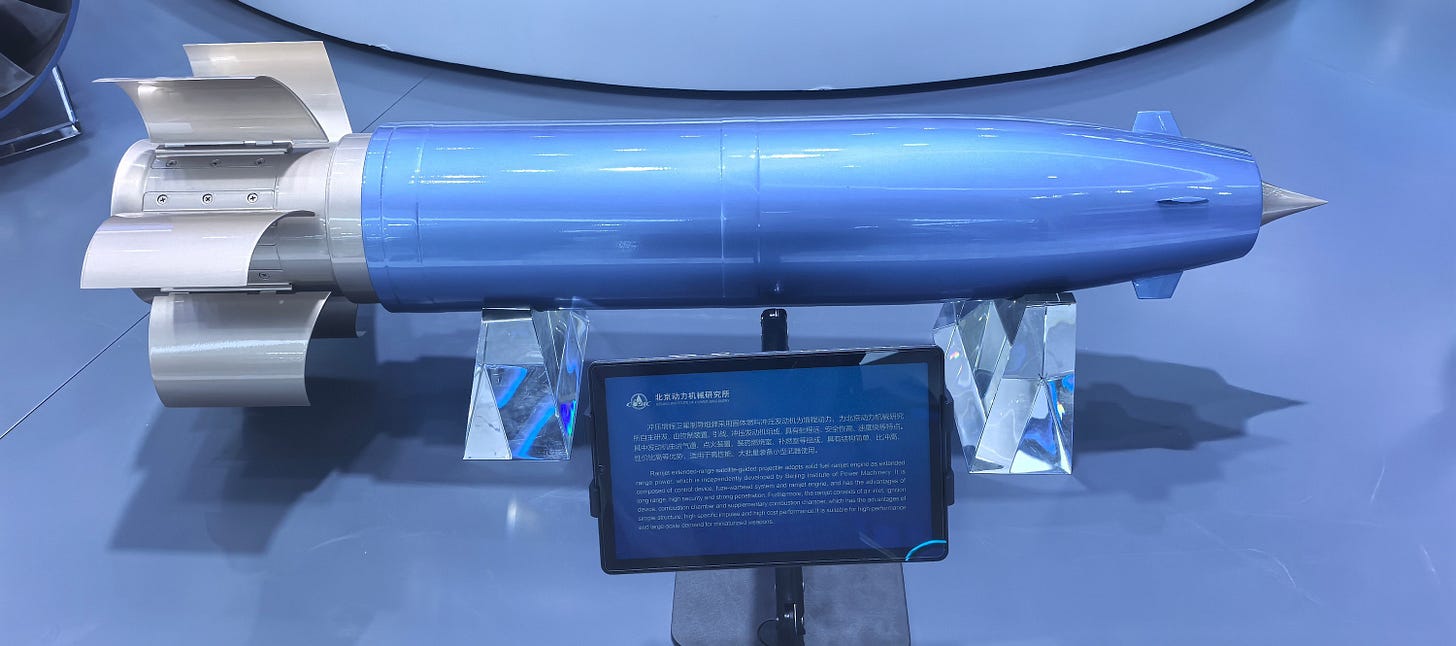While discussions of a People’s Liberation Army (PLA) amphibious invasion of the island of Taiwan tend to focus on the PLA’s amphibious assault capabilities and its ability to neutralize Taiwan’s air defences and coastal defences, China’s ability to provide PLA Ground Force (PLAGF) and other PLA ground combat personnel fire support will likely play a critically important role in both enabling a successful amphibious landing on the island of Taiwan and enabling a breakout from a landing zone. This is an area of Chinese military capabilities that has, to date, received limited attention in public analysis and commentary. In a recent post, I discussed China’s development of a 155 mm naval gun—the PLA Navy (PLAN) primarily uses 130 mm naval guns on most of its destroyers, 76 mm naval guns on most of its frigates and corvettes, and has recently shifted (back) to 100 mm naval guns for its new-build frigates. A 155 mm naval gun will significantly enhance the PLAN’s naval gunfire support capabilities, although it will likely be restricted to use by a small subset of the PLAN’s surface fleet unless China develops and deploys new warships, which can be either around the size of a Type 056-class corvette or smaller or around the size of the PLAN’s Type 052D-class destroyers or larger—that are dedicated to the naval gunfire support role when equipped with any of the above naval gun designs and perhaps other types of armaments.
China Appears To Move Ahead With 155 mm Naval Gun With Likely Significant Implications For Naval Gunfire Support
Note: The following text was originally posted on my X/Twitter account.
The new 155 mm naval gun is not, however, the only approach that the PLA may pursue to provide fire support to PLA forces during an amphibious landing on the island of Taiwan and a subsequent attempt at a breakout from the landing zone(s). Artillery technology has advanced considerably in recent decades, even though most militaries were unwilling and/or unable to allocate the resources that are required to deploy new artillery systems in appreciable numbers, if at all.
While guided artillery ammunition equipped with semi-active laser-homing (SALH) seekers was deployed by both the Soviet Union and the United States by the end of the Cold War, fire-and-forget guided artillery ammunition employing the combination of an inertial navigation system (INS) and a global navigation satellite system (GNSS) receiver is a more recent phenomenon. While inherently susceptible to the effects of electronic warfare—the jamming and/or spoofing of GNSS signals—to varying degrees—INS and GNSS receivers are built to different price points and varying levels of sophistication, which is to say resilience to electronic warfare in the case of GNSS receivers—these nevertheless allow warships to accurately attack stationary terrestrial targets located several dozen kilometers away and do so with an onboard magazine composed of several hundred specimens of such guided artillery ammunition. It is important to note that the maximum range of any artillery system is primarily determined by the propellant charge, chamber pressure, and barrel length and that the latest INS+GNSS guided artillery ammunition, which are of the rocket-boosted variety, have a maximum range of 60-70 kilometers.
The Taiwan Strait is some 130-180 kilometers wide at its narrowest points—the exact figures actually fluctuate, given the extensive land reclamation efforts along the Fujian coastline. Conventional artillery ammunition of the rocket-boosted variety—which is only practical when used in a guided form, given the dispersion encountered when firing an unguided projectile over a distance of several dozen kilometers—is impractical for use from land—in China’s Fujian province—against Taiwan. China may, however, be able to employ (155 mm and similar) ramjet-powered artillery ammunition to target Taiwan from land-based guns located along parts of the Fujian coastline. Ramjets are a form of air-breathing propulsion in which a combustion process—we are talking about artillery ammunition that is powered and not merely boosted in the manner of rocket-boosted artillery ammunition—is sustained using oxidizer that is drawn from the atmosphere, rather than being contained within the weight and volume of the munition, which is inherently inefficient. Multiple design teams around the world are developing ramjet-powered 155 mm artillery ammunition with a target maximum range of around 150 kilometers.
Should the PLAGF deploy 155 mm artillery equipped with such ramjet-powered ammunition on the easternmost parts of Pingtan Island in Fujian, the PLA will be able to target several of the primary candidate beaches for a PLA amphibious assault that are located to the west of the Taipei metropolitan area. Ramjet-powered artillery with a maximum range of around 175 kilometers will allow the PLA to target central Taipei—with guided artillery ammunition—from the easternmost parts of Pingtan Island. This may require the use of larger artillery ammunition, perhaps a 203 mm design (note that 203 mm artillery ammunition of either the very different American or Soviet varieties refers to much larger and heavier ammunition than Soviet 152 mm or NATO-pattern 155 mm artillery ammunition—the difference in mm is very misleading in this case). It is important to note that China’s military industry has exhibited its own 155 mm ramjet-powered artillery ammunition designs and is known to have been active in this area of military technology for many years.
Another (non-exclusive) approach that China may pursue is the use of sub-caliber ammunition like the American XM1155, which is a saboted 155 mm design. The XM1155 has a maximum range of at least 110 kilometers. A major disadvantage of this type of approach to extended-range artillery ammunition design, and a related disadvantage of the ramjet-powered approach more generally, is that a significant portion of the finite weight and volume of 155 mm artillery ammunition is not composed of explosive filler in a type of munition that requires a thick and heavy casing to withstand being launched out of a barrel following the partially contained deflagration of chemical propellant. Such rather exquisite artillery ammunition will tend to have reduced destructive effects, and militaries including the PLA may decide that a notional guided artillery rocket/missile with, say, a maximum range of 150 kilometers while equipped with a meager 10 kilograms or so of high explosives—which is more than one finds in 155 mm artillery ammunition—is a better option than rather exquisite artillery ammunition developed by designers who are arguably going out of their way to forgo (fully) relying on solid-propellant rocket motors.
Guided artillery rockets/missiles of such a peculiar range-payload are not known to exist, and the PLA will likely prefer a guided artillery rocket/missile with a greater payload if it settles on a full embrace of rocket technology. In fact, the PLAGF already employs 300 mm guided artillery rockets/missiles with its PHL-191 systems, some of which already operate from Pingtan Island to target the island of Taiwan. Note, however, that this 300 mm guided artillery rocket/missile is excessive for many roles, is likely to be far more expensive than extended-range guided artillery ammunition and is, therefore, likely to be available in more limited numbers than guided artillery ammunition. The PHL-191 is, as such, not very well suited to providing fire support to PLA forces during an amphibious landing on the island of Taiwan and a subsequent attempt at a breakout from the landing zone(s).
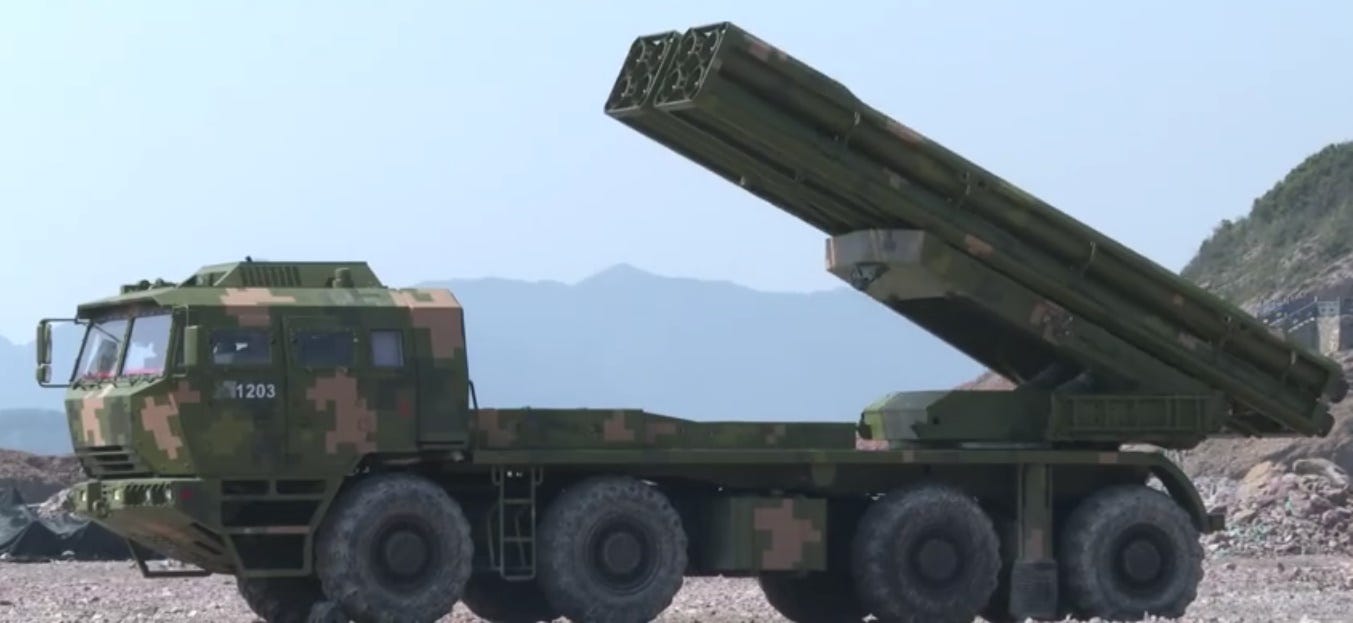
Another (non-exclusive) approach that China may pursue to provide fire support to PLA forces during an amphibious landing on the island of Taiwan and a subsequent attempt at a breakout from the landing zone(s) concerns railgun technology. Whereas all the aforementioned artillery ammunition designs, including ramjet-powered artillery ammunition, leave the ground following the partially contained deflagration of chemical propellant, railguns launch projectiles off the ground using electromagnets. This requires a lot of instantaneous power—we are talking about several megawatts to launch a ~100 kilogram projectile on a ballistic trajectory. The best-known railgun design is the American Advanced Gun System (AGS) developed for use with the U.S. Navy’s Zumwalt-class destroyers, only three of which were ever built (each of which is designed to be equipped with two Advanced Gun Systems). The AGS was designed to use the rocket-boosted 155 mm Long Range Land Attack Projectile (LRAP) ammunition, each of which weighed around 100 kilograms—including 11 kilograms of explosive filler—and could be fired to a maximum range of over 150 kilometers.
China’s military industry has been active in researching and developing railgun technology for many years. In 2018, one of the PLAN’s landing ship tanks (LSTs) was equipped with a railgun in an experimental capacity. The fate of this experimental naval railgun is not public knowledge. More recent satellite imagery indicates the existence of what may be a wheeled, semi-mobile railgun design intended for use on land. It is unclear if these two designs are related.
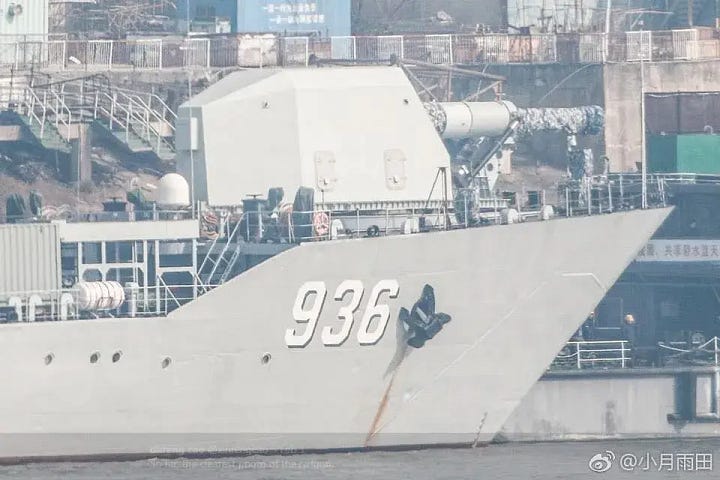
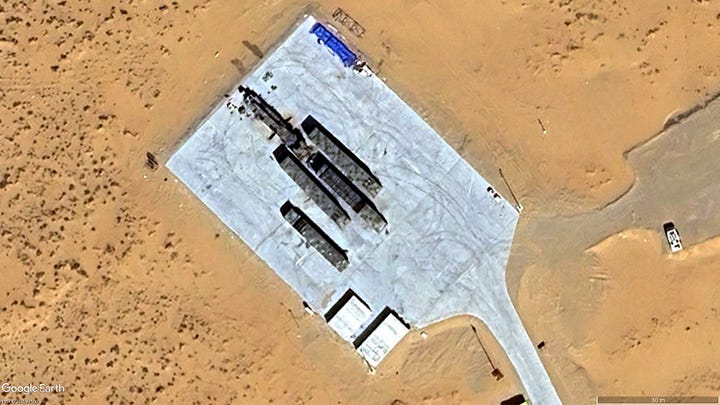
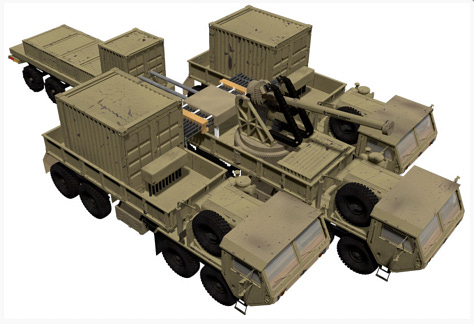
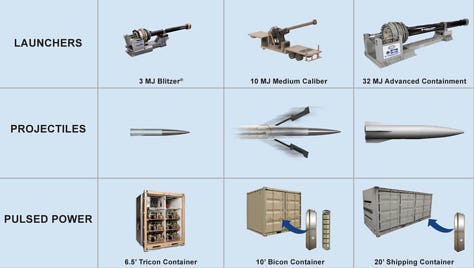
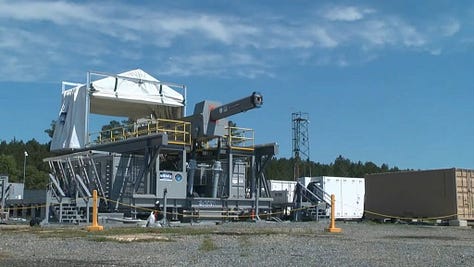
It is worth noting that many of the barriers to the practical employment of railguns from ships stem from the space, weight, power, and cooling (SWAPC) limitations of candidate ships/hulls. While practically employing a ground-based railgun comes with its own set of challenges—railgun technology is itself challenging, the PLA—presumably the PLAGF—may turn to a ground-based railgun to provide fire support to PLA forces during an amphibious landing on the island of Taiwan and a subsequent attempt at a breakout from the landing zone(s).
It is important to note that railgun technology is unlikely to be a panacea for what remains a glaring shortfall in PLA capabilities when it comes to a Taiwan invasion scenario. Railguns have many limitations, and extended-range artillery of any type must be competitive relative to guided artillery rocket/missile technology. The PLA may decide that it is best off turning to specially equipped warships, whether small or large, to launch smaller and lighter—and generally less expensive—shorter-range munitions against Taiwan. This may include less exquisite extended-range artillery ammunition for use with its 130 mm and perhaps 100 mm naval guns, as well as the new 155 mm naval gun, provided that it is installed on a PLAN warship. The PLA may decide not to place all its proverbial eggs in one basket, a dynamic that will not favour railgun technolog,y given that even a semi-mobile wheeled railgun design will likely be tied up at a specific discernible location long enough to be a priority target for the Taiwanese military—the relatively modest width of the Taiwan Strait works both ways—as well as the American military.



